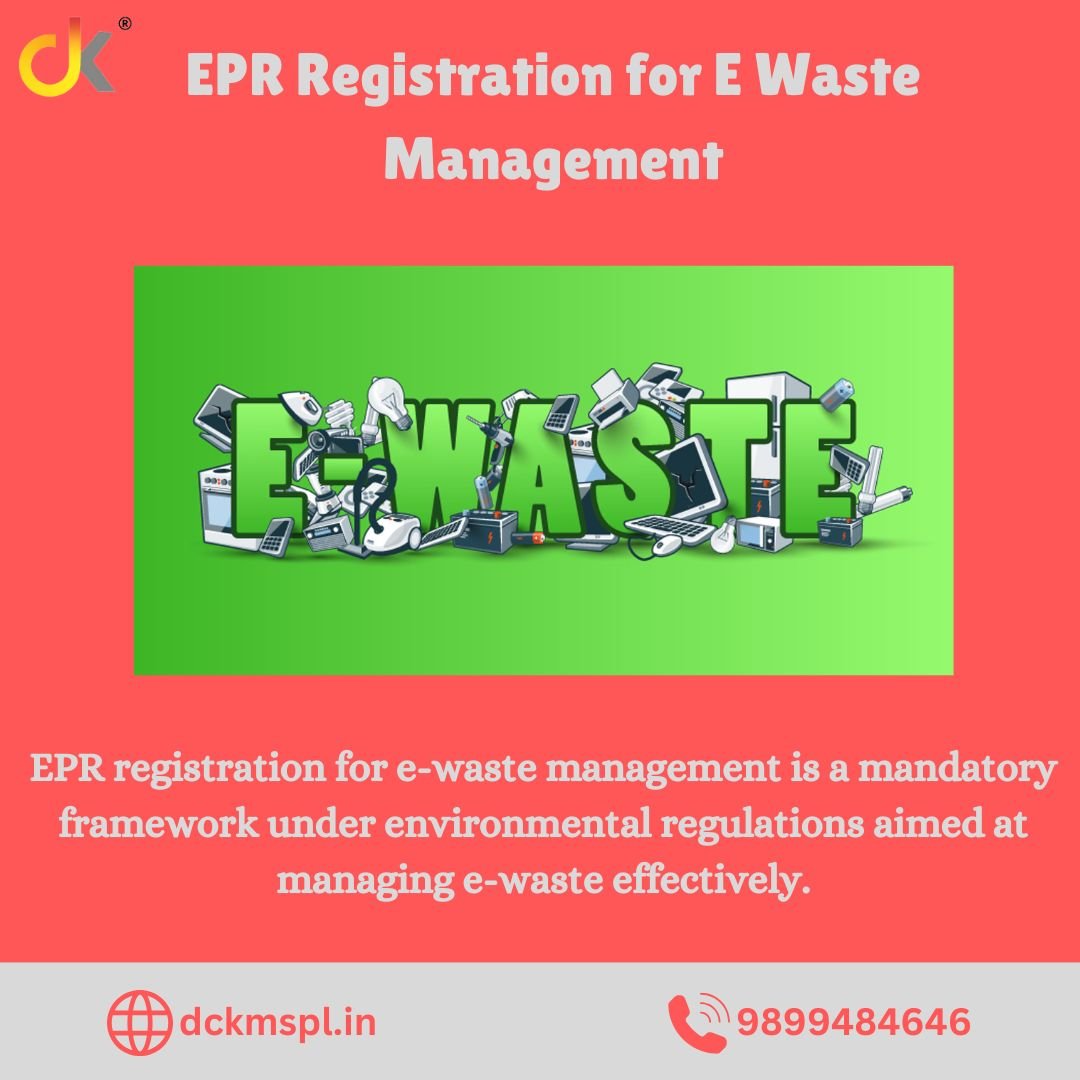E-Waste, or electronic waste, refers to discarded electronic devices and their components, such as computers, smartphones, and household appliances. As technology rapidly advances, the global generation of e-waste has grown exponentially, posing significant environmental and health risks. However, Extended Producer Responsibility (EPR) registration for e-waste management is a crucial initiative designed to address these challenges effectively.In this article, we will explore the EPR registration process for e-waste management, the importance of such registration, its benefits for producers and the environment, and the role of stakeholders in ensuring the success of this program.
What is EPR (Extended Producer Responsibility)?
EPR registration for e-waste management is an environmental policy approach that makes producers responsible for the end-of-life (EOL) management of their products. It shifts the burden of waste management from consumers and municipalities to the producers, encouraging them to design products with recycling and disposal in mind. EPR ensures that producers contribute to the safe and responsible disposal of their products once they reach their end-of-life.For e-waste, this involves manufacturers, importers, and sellers of electronic goods taking responsibility for the collection, recycling, and proper disposal of discarded electronics.
Why Is EPR Registration Important for E-Waste?
- Environmental Impact: E-waste contains hazardous substances like lead, mercury, and cadmium, which can leach into the environment, contaminating soil and water. Proper disposal and recycling through EPR registration ensure that these harmful substances are managed safely.
- Regulatory Compliance: Many countries, including India, have introduced strict regulations for e-waste management. These regulations require producers to meet specific targets for collection, recycling, and disposal. EPR registration is essential for producers to remain compliant with these laws.
- Sustainability and Circular Economy: EPR promotes a circular economy by encouraging the reuse and recycling of electronic products and their components. This reduces the demand for raw materials, conserves resources, and reduces waste. By engaging in EPR, companies play a crucial role in sustainable development.
Steps to Complete EPR Registration for E-Waste
- Understand the Legal Requirements: EPR for e-waste is governed by specific rules and regulations, such as the E-Waste Management Rules 2016 in India. Producers need to familiarize themselves with these rules to ensure they meet the legal requirements, including registration, collection, and recycling targets.
- Determine the Category of E-Waste: Different types of electronic products fall under different categories. Producers need to identify the category of their products, such as large household appliances, small household appliances, IT and telecommunications equipment, etc. This classification helps in determining the collection and recycling targets.
- Register with the Central Pollution Control Board (CPCB): In countries like India, producers must register with the Central Pollution Control Board (CPCB) or the relevant government authority responsible for e-waste management. The registration process involves submitting details about the company’s operations, the types of products sold, and the amount of e-waste they expect to generate.
- .
Benefits of EPR Registration for E-Waste Management
- Environmental Benefits: One of the primary advantages of EPR registration for e-waste management is the reduction of environmental pollution. By ensuring the responsible collection and recycling of electronic products, EPR prevents hazardous materials from polluting the environment.
- Cost Savings: EPR can lead to cost savings for businesses in the long term. By focusing on product design that promotes recycling, producers can reduce the need for raw materials, which is often more expensive than reusing and recycling existing components.
- Brand Image and Corporate Social Responsibility (CSR): Consumers are increasingly becoming environmentally conscious and prefer brands that contribute positively to the environment. By adhering to EPR guidelines and promoting responsible e-waste disposal, companies can enhance their reputation and show their commitment to sustainability.
Role of Stakeholders in E-Waste Management
The successful implementation of EPR for e-waste management involves various stakeholders, including:
- Producers: Manufacturers, importers, and sellers of electronic goods are responsible for ensuring proper collection and recycling of e-waste. They must adhere to the collection and recycling targets and engage in responsible product design.
- Consumers: Consumers play a crucial role by returning their old electronic products to designated collection centers. They must be educated about the importance of e-waste recycling and how to dispose of their old devices responsibly.
- Government Authorities: Governments play a key role in regulating e-waste management and enforcing EPR rules. They are responsible for setting up collection infrastructure, monitoring compliance, and providing financial support to promote recycling initiatives.
Conclusion
EPR registration for e-waste management is an essential initiative that fosters sustainable practices, reduces environmental pollution, and enhances corporate responsibility. Producers must take the necessary steps to comply with the regulations and contribute to the circular economy by ensuring proper disposal, recycling, and recovery of valuable materials from e-waste. By embracing these practices, businesses not only ensure legal compliance but also enhance their reputation, contribute to environmental sustainability, and promote the growth of the recycling industry. With all stakeholders working together, we can create a more sustainable and responsible approach to e-waste management.
